As we approach the Christmas season it could be said the fireplace, the centrepiece of any room, holds more resonance and focus. The fires are lit and the stockings are hung. It is the season of decoration.
To Shelf or not to Shelf? How every mantelpiece tells a story.
21 December 2017
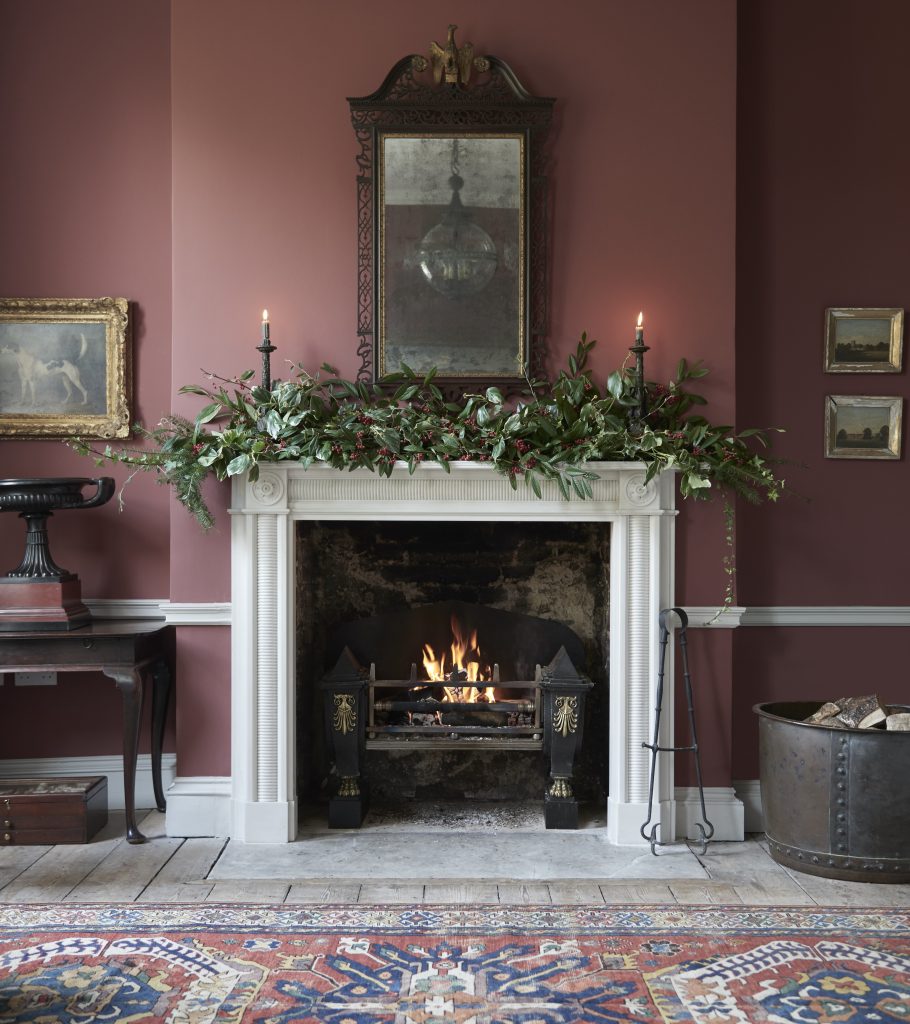
The Talbot fireplace above is decorated with winter greens and berries and a pair of 19th Century gilt bronze candlesticks.
The decorating of a mantel is often at the forefront of our client’s minds when buying a fireplace. The thought of not having a shelf upon which to place carefully curated objects or the Christmas Garland is difficult to comprehend to some, when they see the examples of the early bolection form in our chimneypiece collection.
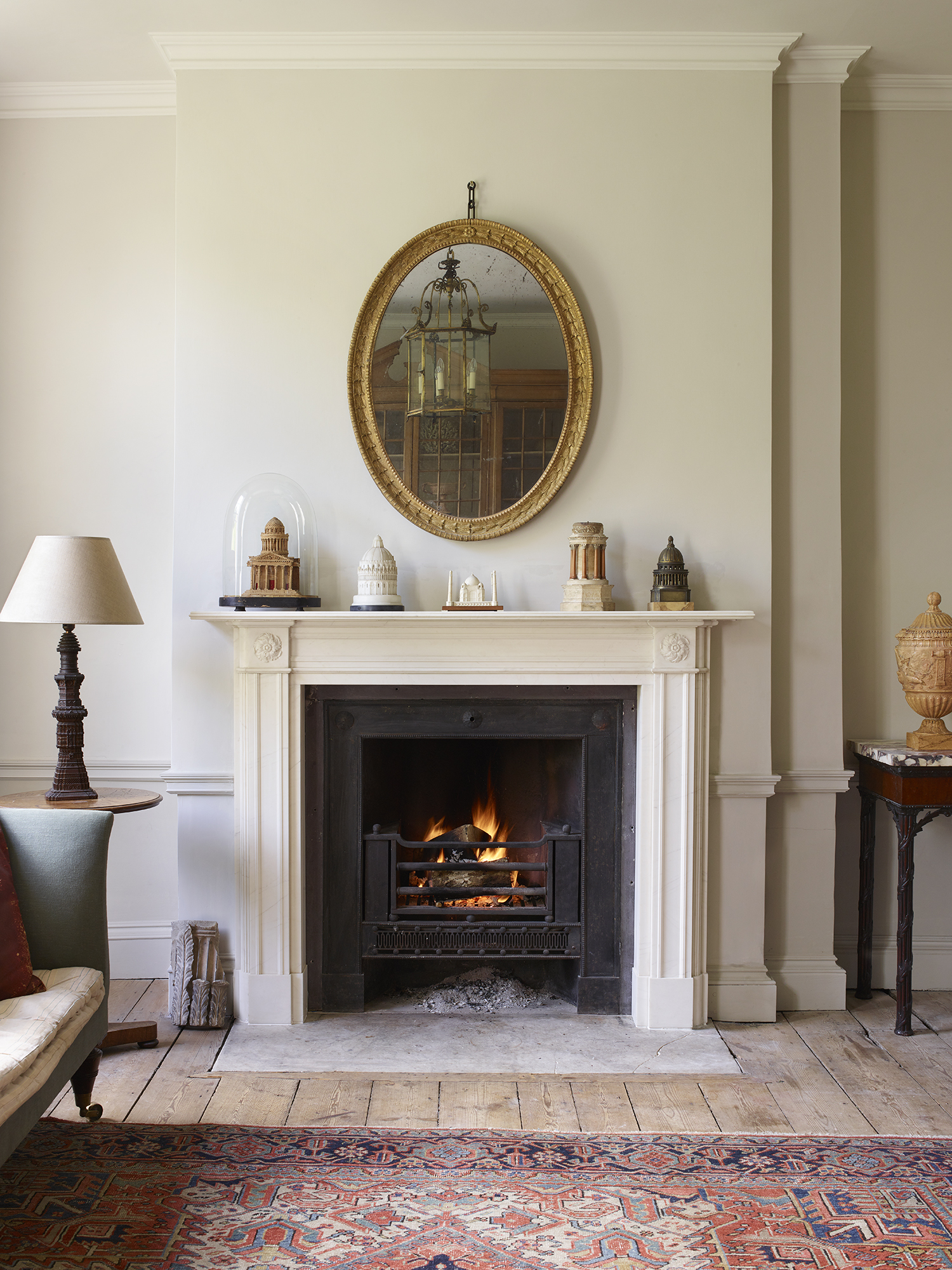
A few of my favourite 18th and 19th Century Grand Tour models including a mid 19th Century replica of the Taj Mahal.
However if you look at the historical development of the structural design of the mantel piece, it is apparent that the earlier the design, there is less chance of the mantel having a shelf. The mantel itself was not the main focus of the room but was designed in union with a fully developed architectural theme that ran throughout the whole room, creating a balance. You only have to look at the harmonious vision of Grinling Gibbon’s exquisitely elaborate decorated rooms: between the carved panelling and intricate festoons and the bolection mouldings at Petworth to understand this and perhaps there is no better example than the state drawing room in Chatsworth, designed by William Kent.
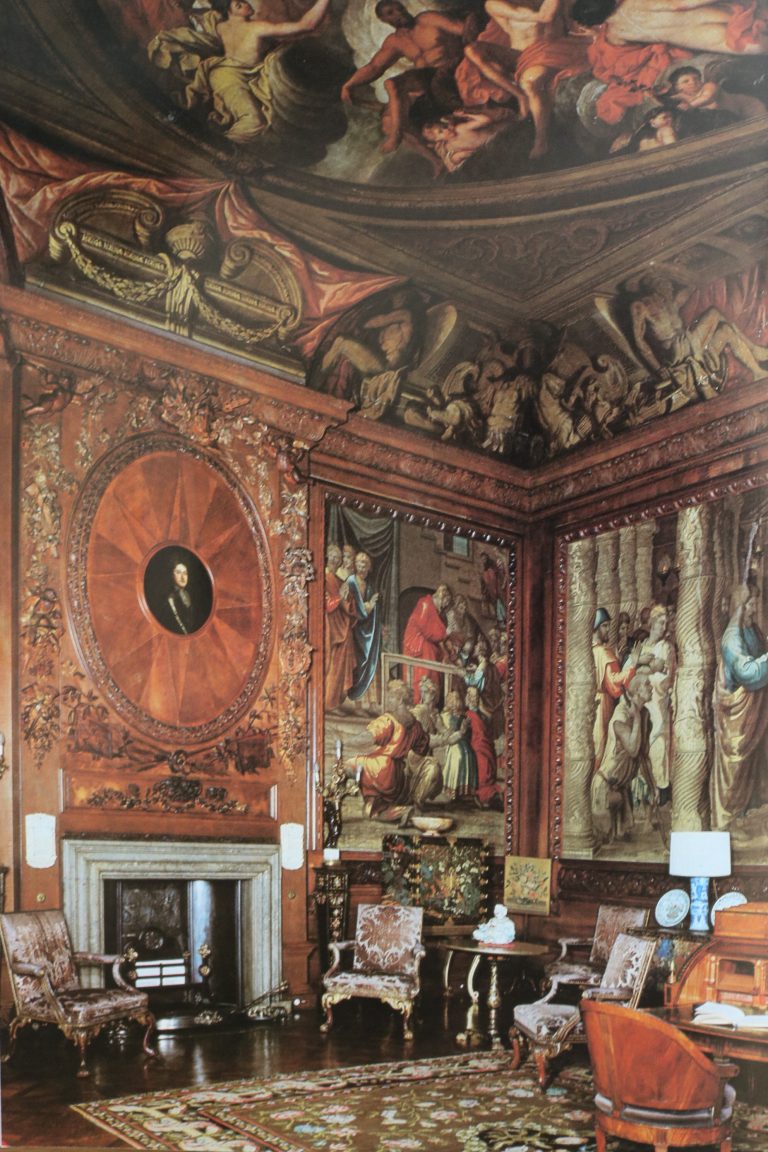
The State room of Chatsworth taken from ‘Great Houses of Britain’ by Nigel Nicholson.
I love what the bolection can offer to a room, the simple mould in a figured marble can have such an impact in a room. In our bedroom we have the most beautiful 18th Century Breche Violette bolection that is a constant source of joy, with only a painting above it.
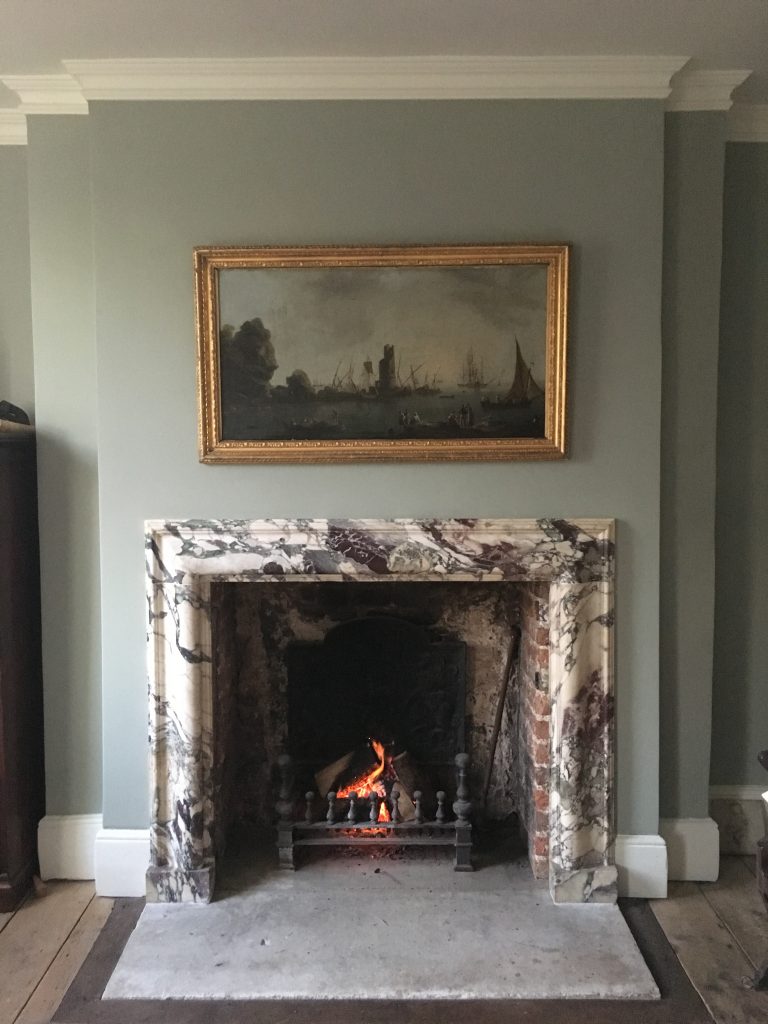
There is nothing more appealing than a bolection without foot blocks with a deep Ogee mould. It appears both a brave and bold statement, yet is a rehash of a theme constantly used in Italy in the 17th Century. The irony is that now in the 21st Century, it appears minimalistic and modern.
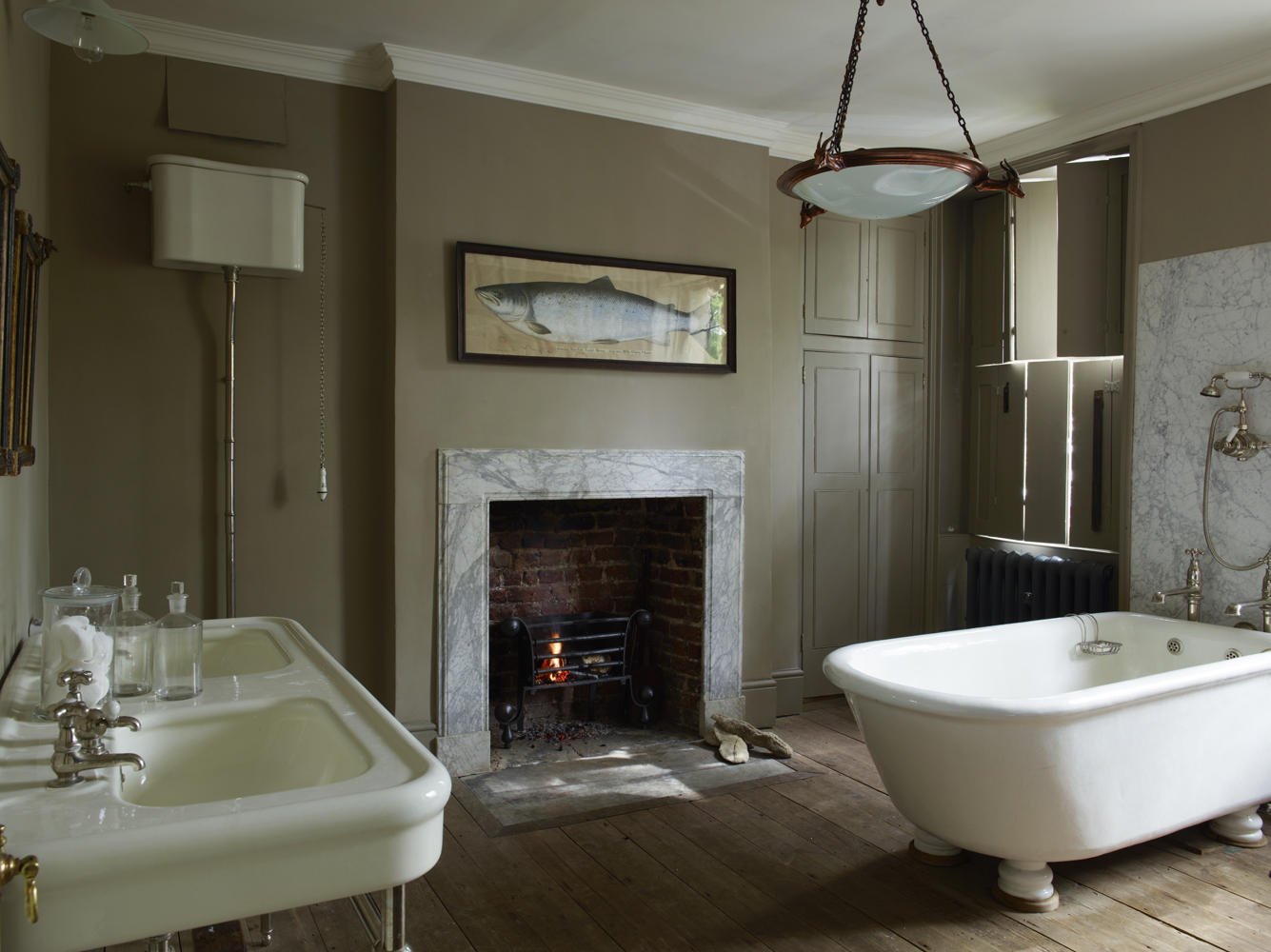
The simple George 1 chimneypiece in the bathroom.
With the beginning of Palladianism, in the mid-17th Century, the chimneypiece takes on a more architectural format and by the nature of it being architectural, it should terminate in a cornice.

A mirror of architectural structure is reflected in the drawing room in Camberwell from the cornice of the room to the architectural frame of the Palladian chimneypiece above that inspired the Oxford design.
This really is the room where we exhibit our beloved objects, my Grand Tour models and various other pieces that come to sit on top of a mantel.

For the mantel in the dining room, I did feel a shelf was important. The room is smaller and the shelf of the 1740’s English chimneypiece that inspired the Montford reproduction, naturally works to exhibit our collection of wedding presents, our children’s artwork and candlesticks.
I am so looking forward to closing the shop tonight for Christmas and dressing the dining room and drawing room mantels ahead of all the festivities.
Its been a wonderful year and I look forward to 2018.
Wishing you all a very Merry Christmas from all of us at Jamb.



